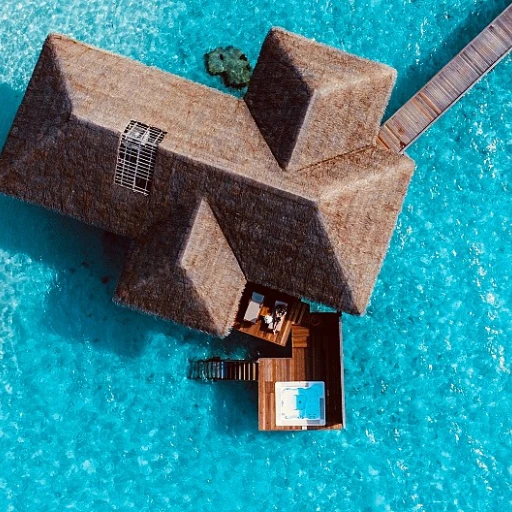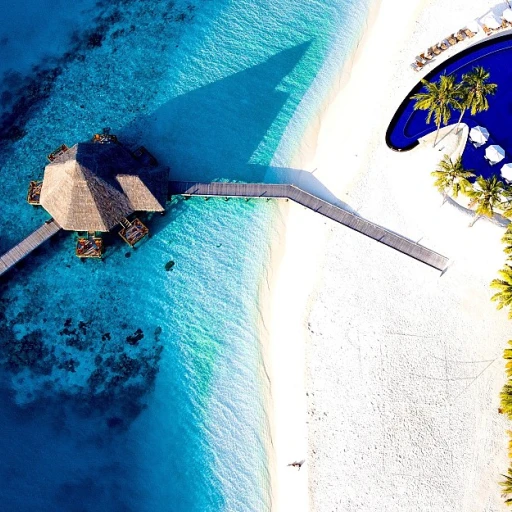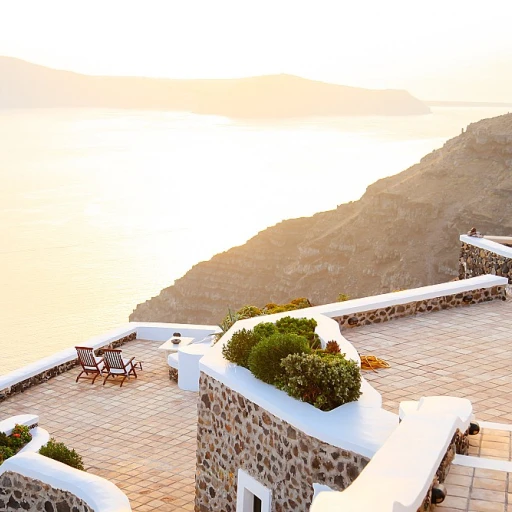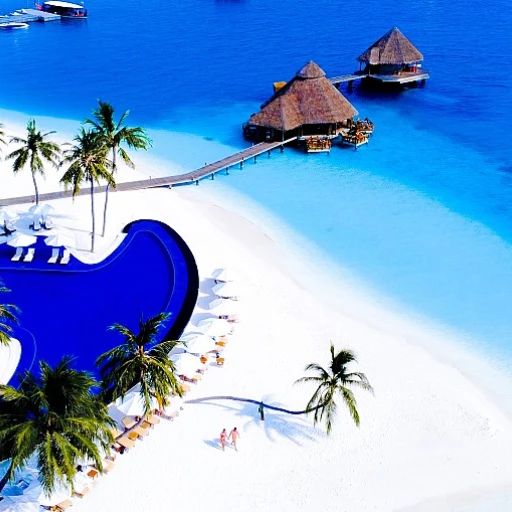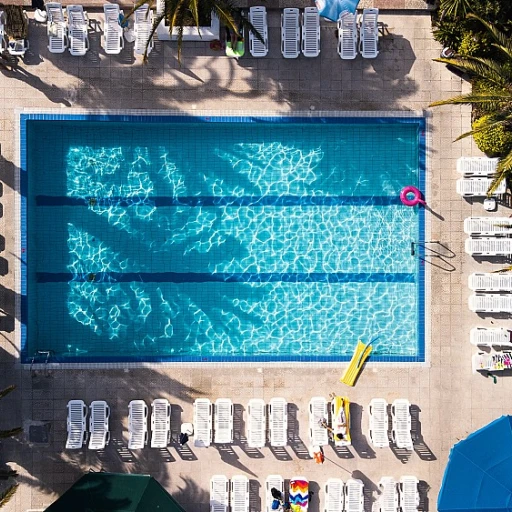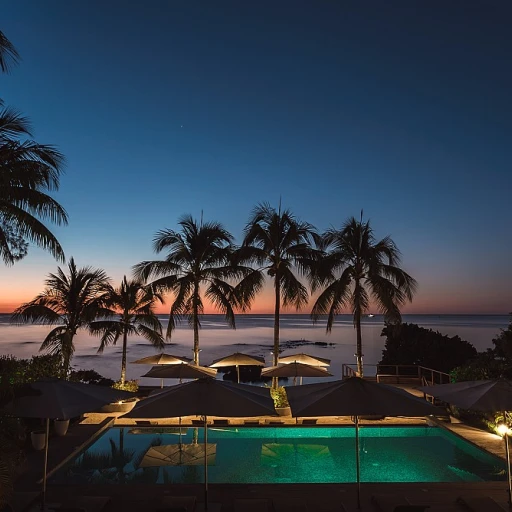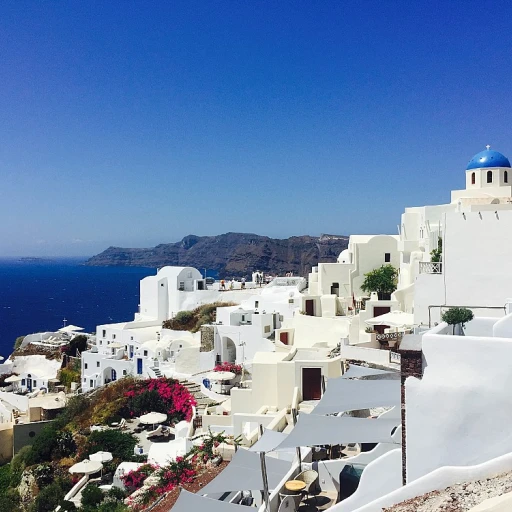The rich history of lucha libre in Mexico City
The origins of lucha libre in mexico city
Lucha libre, or “free wrestling,” has deep roots in Mexican culture. Emerging in the early 20th century, it quickly became a symbol of national pride and identity. Unlike traditional wrestling, lucha libre gained popularity for its unique mix of athleticism, elaborate masks, and captivating storylines. The sport's heart beats strongest in Mexico City, a city that practically breathes wrestling. The sport truly took off in 1933 when Salvador Lutteroth González, often known as the father of lucha libre, founded the Empresa Mexicana de Lucha Libre (EMLL). Today, it's known as Consejo Mundial de Lucha Libre (CMLL), and it remains one of the most significant wrestling promotions in the world. Lutteroth's influence can still be felt today as lucha libre continues to grow and thrive.The evolution of lucha libre
Lucha libre's story is marked by innovation and dynamism. It wasn’t until the 1950s and 1960s, known as the Golden Age of lucha libre, that the sport reached a broader audience. Legendary figures like El Santo, Blue Demon, and Mil Máscaras captivated fans with their dramatic, high-flying maneuvers and intense rivalries. Their fame extended beyond the wrestling ring, starring in popular films and becoming cultural icons. The global reach of lucha libre expanded further when it entered North America and Japan, influencing wrestling styles and captivating new audiences. The colorful masks and personas provided a fresh narrative compared to the wrestling found in places like the United States' WWF (now WWE).What makes lucha libre unique
The masks are perhaps the most distinguishing feature of lucha libre. These masks, often vibrant and intricately designed, are more than accessories; they represent the very soul of the luchador (wrestler). Losing one's mask is a significant and emotional event, often leading to dramatic unmasking ceremonies that symbolize vulnerability and change. In addition to the masks, the style of wrestling is a spectacle of acrobatics and athleticism. Unlike American wrestling, which often emphasizes brute strength, lucha libre showcases agile, airborne assaults and complex holds. The “rudo” (bad guy) versus “técnico” (good guy) dynamic plays out in elaborate matches that can span years, creating deeply engaging storylines. For those interested in learning more about the broader impact of entertainment parks and their connection to cultural activities, you might want to check out our discovering the magic of legoland discovery center dallas fort worth article.Iconic venues: Arena Mexico and Arena Coliseo
Famous wrestling arenas: Arena Mexico and Arena Coliseo
When it comes to experiencing lucha libre in Mexico City, you cannot miss visiting two of the most legendary venues: Arena Mexico and Arena Coliseo. These arenas are not just buildings; they are cultural landmarks that have hosted countless unforgettable matches and have seen many legendary wrestlers rise to fame.
Arena Mexico: the cathedral of lucha libre
Arena Mexico, often referred to as the “Cathedral of Lucha Libre,” is situated in the heart of Mexico City. Built in 1956, this iconic venue can hold up to 16,500 spectators and is considered the largest lucha libre arena in the world of wrestling. The electrifying atmosphere and rich history make every visit here a unique experience. It’s home to Consejo Mundial de Lucha Libre (CMLL), the oldest professional wrestling promotion globally. Every Friday night, passionate fans gather here to watch their favorite luchadores (wrestlers) in epic battles. If you’re planning a trip, be sure to check the schedule on Ticketmaster for match dates and ticket availability.
Arena coliseo: a historical gem
Open since 1943, Arena Coliseo stands as another significant venue in the lucha libre universe. With a seating capacity of around 5,000, it offers a more intimate setting compared to Arena Mexico, yet still delivers the same high-energy experience. Known for its “box y lucha” (boxing and wrestling) events, this arena brings you closer to the action, allowing you to immerse yourself in the drama and skill of Mexican lucha libre. It’s an incredible place to witness the classic Mexican wrestling masks and gear up close.
Soaking in the lucha libre experience
Whether you find yourself at Arena Mexico or Arena Coliseo, the excitement and energy are palpable. From the colorful masks to the theatrical personas of the wrestlers, every aspect of the events is designed to captivate and entertain. Grab some traditional Mexican food and drinks from the vendors and enjoy a night filled with thrills and cheers.
As you plan your lucha libre tour in Mexico City, make sure these iconic venues are on your itinerary. Not only do they offer a glimpse into one of Mexico’s most beloved traditions, but they also provide a once-in-a-lifetime experience that you will remember long after you leave the city.
The stars of lucha libre: Famous wrestlers and their personas
The legends that light up the ring
Lucha libre isn't just about thrilling flips and masked marvels; it's also about the larger-than-life personas that dominate the ring. Some of these wrestlers have become legends, etching their names into the annals of Mexican culture and beyond. Their stories and characters breathe life into the sport, making each match more than a competition—it's a dramatic saga that fans from Mexico to the United States follow religiously. One such luminary is El Santo, or 'El Enmascarado de Plata' (The Silver-Masked One), who wore his iconic silver mask for nearly five decades. Born Rodolfo Guzmán Huerta, El Santo is often regarded as the greatest luchador of all time. His legacy transcends wrestling as he also starred in a series of successful films in the 1960s and 1970s, further embedding his persona into Mexican pop culture. According to a study by the Mexican Institute for Cinematography, his movies were some of the highest grossing in the history of Mexican cinema. Another iconic figure is Blue Demon, El Santo's longtime rival and occasional tag team partner. Born Alejandro Muñoz Moreno, Blue Demon similarly transitioned to film, becoming nearly as entrenched in Mexican culture as El Santo. Their rivalry is one of the most celebrated in lucha libre history, with both stars drawing massive crowds whenever they squared off. It wasn’t just a fight; it was an event, a spectacle, something that fans would talk about for years. In today's lucha libre scene, Rey Mysterio Jr. stands out as one of the few who has achieved international fame. With his colorful masks and high-flying maneuvers, he's known for bridging the gap between Mexican lucha libre and American professional wrestling, especially during his tenure with WWE. According to an article by ESPN, Rey Mysterio's influence helped introduce a new generation of fans to the art and tradition of lucha libre. The legendary female wrestler, known as 'La Parka,’ is also a name synonymous with lucha libre. Unlike most of her male counterparts, she smashed the traditional barriers in a sport dominated by men. Her performances have inspired countless young girls in Mexico to take up wrestling, proving that the lucha libre ring isn't just a man's domain. For a more hands-on experience with these legends' impact, visitors can book a lucha libre tour to dive deeper into the stories of these wrestling icons. These tours often include entrance to training schools where fans can learn about the demanding routines that today's stars must endure. Lucha libre's legends have a way of making you believe that anything is possible. It’s not just about the mask or the fame. It's about touching the hearts and souls of countless fans. Knowing their stories and seeing them in action is an indispensable part of experiencing lucha libre in Mexico City.The spectacle of a lucha libre match
Unforgettable energy
The excitement starts the moment you step into the arena. Fans, both locals and tourists, are buzzing with anticipation, creating an atmosphere that’s hard to find anywhere else. The arenas, Arena Mexico and Arena Coliseo, are filled with chants, cheers, and the occasional jeer, all adding to the vibrant experience. According to a 2019 report by the Mexico Tourism Board, over 70% of attendees at lucha libre matches in Mexico City are repeat visitors, showcasing its magnetic appeal.
High-flying acrobatics and dramatic storytelling
Once the match begins, you're in for non-stop action. Lucha libre is well-known for its high-flying maneuvers, intricate holds, and fast-paced bouts that keep fans on the edge of their seats. Wrestlers, or luchadores, perform gravity-defying flips and aerial attacks that would wow even the most skeptical viewer. Luchadores like El Hijo del Santo and Blue Demon Jr. are famous for their incredible agility and dramatic storytelling, making every match a unique narrative of good versus evil, heroes versus villains.
Behind the mask: the luchadores
The mask is an iconic element of lucha libre, symbolizing mystery and tradition. Famous luchadores, such as El Santo and Blue Demon, wove their identities into their masks, becoming legends both inside and outside the ring. According to a 2018 study by Universidad Nacional Autónoma de México, approximately 90% of luchadores wear masks to preserve their anonymity and enhance the theatrical aspect of their performances. The wrestlers' personas are often larger than life, adopting elaborate costumes and distinct character traits.
Fan interaction and engagement
Audience participation is vital in lucha libre. Fans bring their own creativity by wearing replica masks of their favorite wrestlers and creating signs to show their support. Interaction reaches a peak during the matches, with spectators vehemently cheering for their heroes and booing the villains—the Rudos and Técnicos. Touring the different attractions in Mexico City, including lucha libre, can provide an immersive introduction to Mexican culture.
Booking your lucha libre tour in Mexico City
Finding the best tickets for a lucha libre experience
When you're ready to witness the electric atmosphere of lucha libre in Mexico City, the first step is securing the best tickets. The two iconic arenas for these matches are Arena Mexico and Arena Coliseo. These venues are not just the heart and soul of Mexican wrestling but also pulsate with the country's cultural fabric.
Book through Ticketmaster or at the venue
For ease and reliability, most recommend booking through Ticketmaster. This ensures you get legitimate tickets and a choice of seats, whether you prefer being up close to the action or having a broader view from the higher tiers. For a truly immersive experience, however, some fans prefer purchasing tickets directly at the arena. This can add a bit more excitement and anticipation before the match.
Tour packages
If you want a hassle-free experience, you can opt for one of the many lucha libre tour packages. These packages often include transportation, tickets, and sometimes even visits to a local wrestling gym or meet-and-greet sessions with the wrestlers. Companies like MexTour and Lucha Libre Experience offer comprehensive tour deals tailored to various preferences and budgets.
Considering the best seats
The seats you choose can significantly influence your experience. The front-row seats are highly coveted as they get you closest to the action, but the middle-tier seats are often a sweet spot offering excellent views without being overly priced. Reviews and personal anecdotes highlight that no seat in Arena Mexico or Arena Coliseo provides a dull experience—each has its charm.
Budgeting for the event
Ticket prices for lucha libre matches range widely, from as low as 50 MXN to upwards of 500 MXN depending on the match, the wrestlers performing, and the seat location. Besides the ticket, consider your budget for food and drinks at the arena, which are a significant part of the experience. Traditional snacks like tacos and churros are available, and indulging in them adds another layer to your journey into Mexican culture.
Don't miss the friday night matches
For the most vibrant experience, aim for the Friday night matches. These are the most energetic, and the atmosphere is often more electrifying than at any other time. The CMLL or Consejo Mundial de Lucha Libre events on Friday nights are among the most anticipated, drawing the biggest crowds and featuring top-tier talent.
With these tips and insights, booking your lucha libre tour will be a breeze, ensuring you have a fantastic and unforgettable time in Mexico City. Whether it's your first match or you're a seasoned fan, the magic of lucha libre is guaranteed to captivate and thrill.
The cultural significance of lucha libre
The heart of Mexican identity through masks
The significance of lucha libre in Mexico City goes far beyond the wrestling ring. Masks are an integral part of the lore, symbolizing a deeper connection with Mexican history and culture. In lucha libre, masks represent more than their wrestlers; each mask and design carries a legacy that can be traced back to Mexican warriors and folklore.
El Santo, one of the most iconic wrestlers, wore his silver mask for over five decades, becoming a symbol of justice. This dedication to the mask showcases how deeply it is ingrained in the cultural fabric of the country. According to historian Heather Levi in her book “The World of Lucha Libre: Secrets, Revelations, and Mexican National Identity,” the mask is a way for wrestlers to transcend their human form, embodying mythological and historical personas.
A reflection of the social landscape
Lucha libre matches often mimic broader social issues, with bouts representing the fight between good and evil, repression and freedom, tradition and contemporary society. The técnicos (good guys) and rudos (bad guys) symbolize the spectrum of societal struggles and values. The Hero and Villain dynamic helps audiences connect and immerse themselves, making each match more than just physical contests.
In a 2019 study by the Mexican Institute of Popular Culture, it's evident that attendees see the sport as a mirror to their daily lives and struggles. This engagement makes the sport more than just entertainment – it acts as a cultural commentary and a source of hope and motivation.
Impact on local economy and tourism
Many tourists visiting Mexico City book lucha libre tours, helping bolster the local economy. With Ticketmaster and other booking platforms making it easy to purchase seats, many venues like Arena Mexico and Arena Coliseo are often packed. This, in turn, benefits nearby businesses like hotels, restaurants, and souvenir shops.
According to Tripadvisor reviews, the majority of tourists recommend combining these matches with local cultural experiences to get a fuller understanding of Mexican life. The Coliseo and Arena Mexico are frequently highlighted for their atmospheric charm and electrifying matches that leave a lasting impression.
¡Muchachos y muchachas, you will not regret this experience!
For first-time visitors, the significance of lucha libre will grip you from the moment you step into the arena. Parents bring children to instill a sense of national pride, and friends gather to cheer for their favorite wrestlers. It’s a communal, passionate affair that showcases both the intensity of the physical matches and the heartwarming bonds shared in the stands.
Make sure to book your tickets early, and don't forget to check out other cultural attractions while you're there!
Combining lucha libre with other Mexico City attractions
Exploring Mexico City's other hidden gems
While attending a lucha libre match is a must, Mexico City has a plethora of other attractions to explore. One cannot miss the enchanting temples of Teotihuacan, just a short drive from the city. Known as the “Pyramid of the Sun” and “Pyramid of the Moon,” these pre-Columbian monuments are a breathtaking sight, offering stunning panoramic views of the entire archaeological site.
Adventures in Mexico City's vibrant markets
After experiencing the high-flying action of lucha libre, stroll through traditional markets like Mercado de la Merced and Mercado Sonora for an authentic taste of Mexican culture. These bustling markets are filled with aromatic spices, colorful crafts, and local delicacies. Don’t forget to sample some street food like tacos al pastor or crispy churros.
A journey through art and history
Mexico City is also a paradise for art lovers. Explore the works of world-renowned artists like Frida Kahlo and Diego Rivera at Museo Frida Kahlo (also known as the Blue House) and the stunning Palacio de Bellas Artes. These sites offer a deep dive into the rich artistic heritage of Mexico and reflect the vibrant cultural tapestry of the city.
Nightlife that rivals the wrestling ring
When the sun goes down, Mexico City comes alive with its electrifying nightlife. Head to neighborhoods like Roma Norte and Condesa for an array of trendy bars, eclectic eateries, and live music venues. If you’re into salsa dancing or want to see a bustling nightclub in action, you won’t be disappointed.
Mixing lucha libre with day trips
Plan a day trip to nearby hidden treasures such as Xochimilco’s floating gardens or the serene Chapultepec Park. Both locations offer a tranquil escape from the city's hustle and bustle, all while being steeped in history and natural beauty.
For an unforgettable experience, watch lucha libre in action then explore these incredible attractions to truly immerse yourself in the dynamic spirit of Mexico City.
Expert insights and tips for first-time visitors
Essential packing tips for your lucha libre adventure
So, you're heading to Mexico City to watch a thrilling lucha libre match? That sounds like an amazing adventure! But before you hop on that plane, let's ensure you're well-prepared. Lucha libre isn't just about the action in the ring; it's about the entire experience. Whether you're visiting Arena Mexico or Arena Coliseo, a few essential packing tips will help you make the best out of your experience.
Comfortable clothing: Mexico City can get pretty warm, especially inside packed arenas. Light, breathable clothing is a must. Think casual attire; t-shirts, shorts, or light pants are ideal. If you're planning to attend a lucha libre tour, comfortable shoes are essential, as you’ll be on your feet a lot.
Layer up: Though it’s warm during the day, evenings can get chilly. Packing a lightweight jacket or a hoodie can be a lifesaver. You want to remain comfortable during and after the matches.
Expect the unexpected: Lucha libre matches are often filled with surprises. Bringing an extra battery pack or a portable charger for your phone ensures you capture every jaw-dropping moment without missing a beat.
How to navigate mexico city like a pro
Mexico City is a bustling metropolis with much to offer beyond lucha libre. Here are some crucial tips for getting around like a seasoned traveler.
Public transport: Mexico City's metro system is one of the best ways to move around. It's efficient, cheap, and extensive. The metro can get crowded, though, so be prepared for tight spaces, especially during rush hours.
Ride-sharing services: Companies like Uber and DiDi are widely available and can be a more convenient option if you’re heading to a lucha libre match late at night. These services are safer and more reliable compared to traditional taxis.
Walking: If you’re staying in central neighborhoods like Roma Norte or Condesa, walking can be a delightful way to explore. Mexico City's streets are full of life, from delectable food stands to incredible street art.
Exploring local cuisine
One cannot talk about Mexico City without mentioning its cuisine. While you're here, immerse yourself in local flavors that will elevate your lucha libre experience to another level.
Street food: Tacos, quesadillas, and churros from a local stand are a must-try. These food stalls offer authentically prepared fare that you might not get elsewhere. Be sure to try a taco al pastor—it’s a favorite among both locals and tourists.
Restaurants: For a sit-down experience, head to any local fonda (small restaurant) for a cozy atmosphere and home-cooked Mexican meals. Restaurants in areas like Roma Norte often serve regional specialties, giving you a real taste of Mexican cuisine.
Drinks: While watching lucha libre, nothing beats a cold cerveza (beer). You can also try traditional drinks like horchata or agua de jamaica. Many venues have their unique drink specials for lucha libre nights, so don’t miss out!
Choosing the best seats for maximum thrill
When it comes to watching lucha libre, where you sit can make all the difference. Here's a quick guide on finding the best seats.
Front-row seats: These are closest to the action. You’ll be able to hear every slam and cheer from the wrestlers, but be prepared to pay a bit more. Tickets can be purchased through Ticketmaster but book in advance as these tend to sell out quickly.
Middle-tier seats: These seats provide a balanced view and are generally more affordable. You’ll have a good vantage point and won’t miss any high-flying action. Plus, you’ll be sitting among passionate fans, which adds to the atmosphere.
Upper-tier seats: The most budget-friendly option, offering a bird’s-eye view of the entire arena. These seats are perfect if you want to soak in the entire spectacle without breaking the bank.
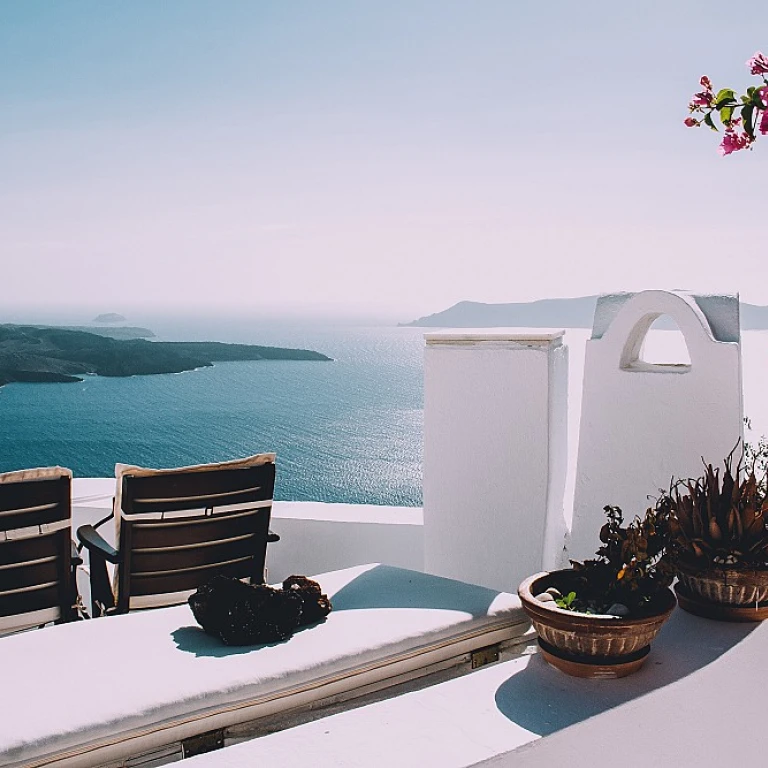
-large-teaser.webp)

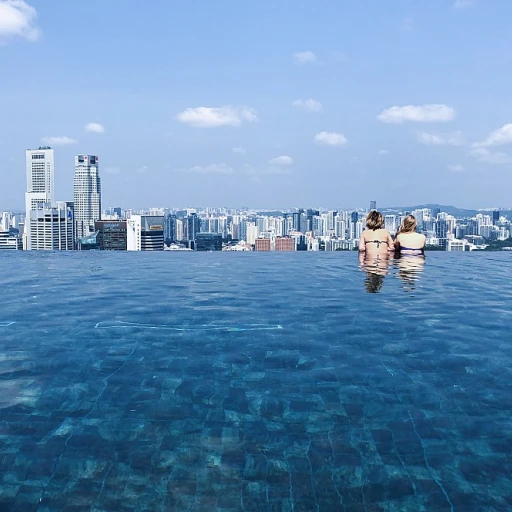
-large-teaser.webp)
-large-teaser.webp)
